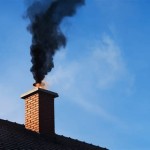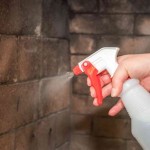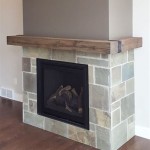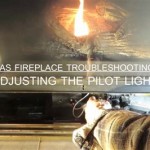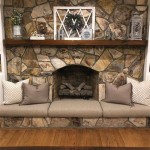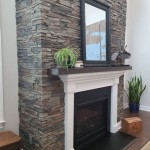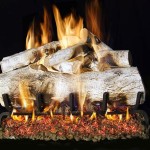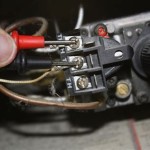Heatilator Gas Fireplace Troubleshooting: A Comprehensive Guide
Heatilator gas fireplaces offer a convenient and efficient way to add warmth and ambiance to a home. However, like any mechanical system, they can experience operational issues. Understanding common problems and troubleshooting techniques is crucial for maintaining optimal performance and ensuring safety. This article provides a comprehensive guide to troubleshooting common Heatilator gas fireplace issues.
Pilot Light Problems: Ignition and Flame Stability
A malfunctioning pilot light is a frequent cause of gas fireplace problems. The pilot light serves as a constant ignition source for the main burner. Issues can range from difficulty lighting the pilot to the pilot light extinguishing shortly after ignition, or exhibiting an unstable, flickering flame.
Cause 1: Dirty Pilot Assembly. Over time, dust, debris, and carbon deposits can accumulate on the pilot assembly, obstructing the flow of gas and impeding proper ignition. This is perhaps the most common issue. The pilot orifice, a small opening through which gas flows, is particularly susceptible to blockage.
Troubleshooting Steps:
1. Turn off the gas supply to the fireplace. This is a critical safety precaution. Usually, a shut-off valve is located near the fireplace or on the gas supply line leading to it.
2. Allow the fireplace to cool completely.
3. Carefully disassemble the pilot assembly. Consult the Heatilator owner's manual for specific instructions as designs vary.
4. Clean the pilot orifice using a specialized pilot orifice cleaning tool or a thin wire. Avoid using anything that could damage the orifice, such as a drill bit. Compressed air can be used to blow out any remaining debris.
5. Clean the pilot light assembly using a soft brush or cloth to remove any surface deposits.
6. Reassemble the pilot assembly according to the manufacturer's instructions.
7. Turn the gas supply back on and attempt to relight the pilot light.
Cause 2: Faulty Thermocouple or Thermopile. The thermocouple or thermopile is a safety device that senses the presence of the pilot light flame. If the pilot light is lit, the thermocouple/thermopile generates a small electrical current that keeps the gas valve open. If the pilot light goes out, the electrical current stops, and the gas valve closes, preventing unburned gas from escaping.
Troubleshooting Steps:
1. Inspect the thermocouple/thermopile for any signs of damage, such as corrosion, cracks, or loose connections.
2. Use a multimeter to test the output voltage of the thermocouple/thermopile. The owner's manual will specify the correct voltage range. If the voltage is outside the specified range, the thermocouple/thermopile is likely faulty and needs to be replaced.
3. Ensure the thermocouple/thermopile is properly positioned in the pilot light flame. It should be directly in the path of the flame to ensure proper heating and voltage generation.
4. Tighten any loose connections.
Cause 3: Low Gas Pressure. Insufficient gas pressure can prevent the pilot light from igniting or cause it to burn weakly and erratically.
Troubleshooting Steps:
1. Check the gas supply valve to ensure it is fully open.
2. Inspect the gas line for any kinks or obstructions that could restrict gas flow.
3. If other gas appliances in the home are experiencing similar issues, it may indicate a problem with the main gas supply. Contact the gas company to investigate.
4. A manometer can be used to measure the gas pressure at the fireplace. Consult the Heatilator owner's manual for the correct pressure specifications. If the pressure is too low, a qualified technician may need to adjust the gas regulator.
Main Burner Problems: Ignition Failure and Flame Appearance
Issues with the main burner can manifest as difficulty igniting, uneven flame distribution, or unusual flame color. Addressing these problems promptly is essential for maintaining efficient operation and preventing potential safety hazards.
Cause 1: Clogged Burner Ports. Similar to the pilot assembly, the burner ports can become clogged with dust, debris, and carbon deposits, hindering the flow of gas and creating uneven or weak flames.
Troubleshooting Steps:
1. Turn off the gas supply to the fireplace and allow it to cool completely.
2. Remove the burner assembly according to the manufacturer's instructions.
3. Inspect the burner ports for any visible obstructions.
4. Use a wire brush or a specialized burner cleaning tool to clean the burner ports.
5. Compressed air can be used to blow out any remaining debris.
6. Reassemble the burner assembly and turn the gas supply back on.
7. Observe the flame pattern. The flames should be even and blue with slight yellow tips.
Cause 2: Faulty Igniter. Heatilator gas fireplaces typically use a spark igniter or a hot surface igniter to ignite the main burner. A malfunctioning igniter will prevent the burner from lighting.
Troubleshooting Steps:
1. Visually inspect the igniter for any signs of damage, such as cracks or broken wires.
2. If it is a spark igniter, check for a spark at the igniter tip when the fireplace is turned on. If there is no spark, the igniter may be faulty or the wiring may be loose.
3. If it is a hot surface igniter, check if the igniter glows orange when the fireplace is turned on. If it does not glow, the igniter is likely faulty.
4. Use a multimeter to test the igniter for continuity. If there is no continuity, the igniter needs to be replaced.
Cause 3: Incorrect Air/Gas Mixture. An improper air/gas mixture can result in inefficient combustion, producing a yellow or sooty flame and potentially generating carbon monoxide.
Troubleshooting Steps:
1. Locate the air shutter on the burner assembly. This is a small adjustable opening that controls the amount of air that mixes with the gas.
2. Consult the Heatilator owner's manual for the recommended air shutter setting.
3. Adjust the air shutter gradually while observing the flame. The goal is to achieve a blue flame with slight yellow tips.
4. If adjusting the air shutter does not correct the problem, it may indicate a more serious issue, such as a problem with the gas regulator or the gas supply. A qualified technician should be consulted.
Odor and Noise Issues
Unusual odors or noises emanating from the gas fireplace can indicate underlying problems that require prompt attention. These symptoms should not be ignored as they can potentially indicate a safety hazard.
Cause 1: Gas Leak. The smell of gas is a serious indication that there could be a gas leak. Even a small gas leak can be dangerous.
Troubleshooting Steps:
1. If the smell of gas is detected, immediately turn off the gas supply to the fireplace.
2. Do not use any electrical devices, such as light switches or telephones, as they could generate a spark and ignite the gas.
3. Open windows and doors to ventilate the area.
4. Evacuate the premises
5. Contact the gas company or a qualified gas technician immediately from a safe location. They will have the specialized equipment to detect and repair gas leaks safely.
Cause 2: Dust Burning. A burning dust smell, especially when the fireplace is first turned on after a period of inactivity, is often caused by dust and debris accumulating on the fireplace components.
Troubleshooting Steps:
1. Allow the fireplace to cool completely.
2. Clean the firebox, burner assembly, and any other accessible components with a vacuum cleaner and a soft brush.
3. Ensure that the venting system is clear of any obstructions.
Cause 3: Unusual Noises. Popping, clicking, or hissing noises can indicate various issues within the fireplace system.
Troubleshooting Steps:
1. Popping or clicking noises are often caused by the expansion and contraction of metal components as they heat up and cool down. This is generally normal, but excessive noise could indicate loose components. Check for any loose screws or brackets and tighten them as needed.
2. Hissing noises could indicate a gas leak. Follow the steps outlined above for addressing a gas leak.
3. Rumbling or roaring noises could indicate a problem with the burner or the venting system. Consult a qualified technician to diagnose and repair the problem.
This guide provides a starting point for troubleshooting common Heatilator gas fireplace problems. Regular maintenance, including cleaning and inspection, can help prevent many issues. If the problem persists or if you are not comfortable performing the troubleshooting steps, it is always best to consult a qualified gas fireplace technician. They have the expertise and tools to diagnose and repair complex problems safely and effectively. Consulting the Heatilator owner's manual is an essential first step in any troubleshooting process, as it provides specific information about the model in question.

Gas Fireplace Doctors Index

Heatilator Gas Fireplace Troubleshooting

Heatilator Gas Fireplace Operation

Heatilator Gcdc42l Troubleshooting Hearth Com Forums Home

Syncing Heatilator Smart Stat Or Batt Remote

Troubleshooting Maintenance

Installing A Fireplace Blower Gfk4 Gfk4a In Heatilator Natural Gas
Tips For Getting Your Fireplace Ready Heatilator

Gas Fireplace Odor
The Value Of Your Efficient Gas Fireplace Heatilator
Related Posts

